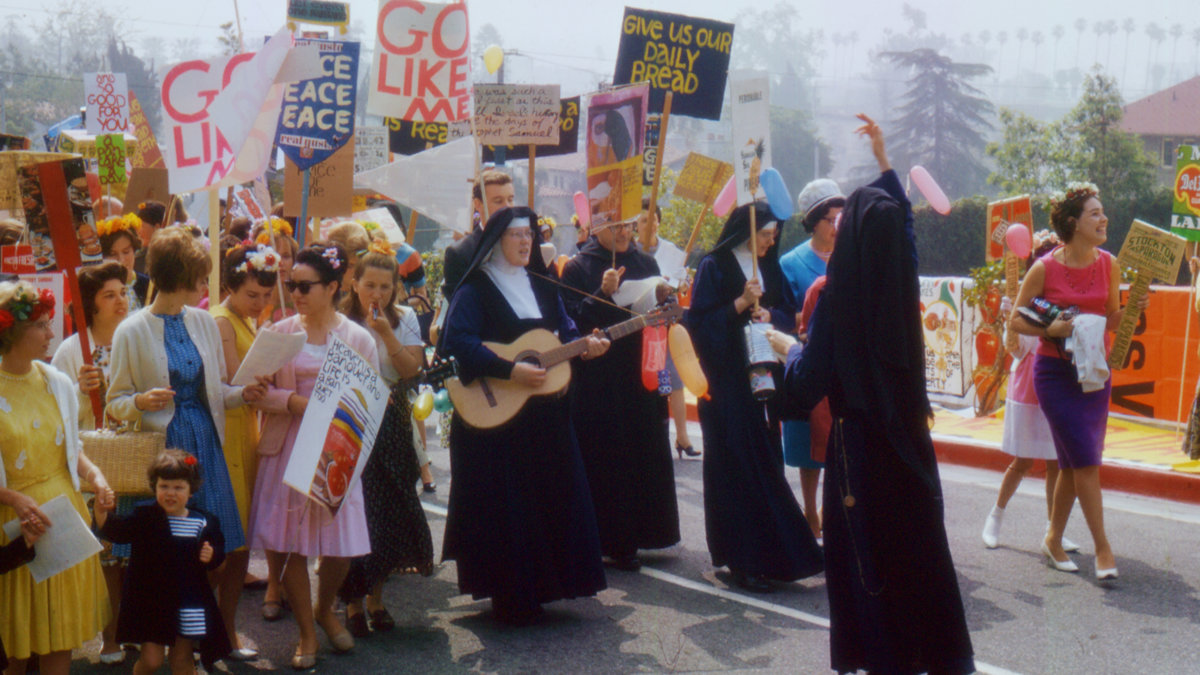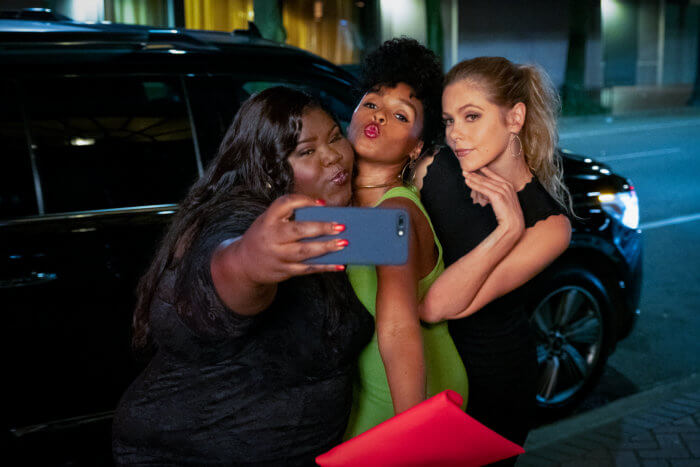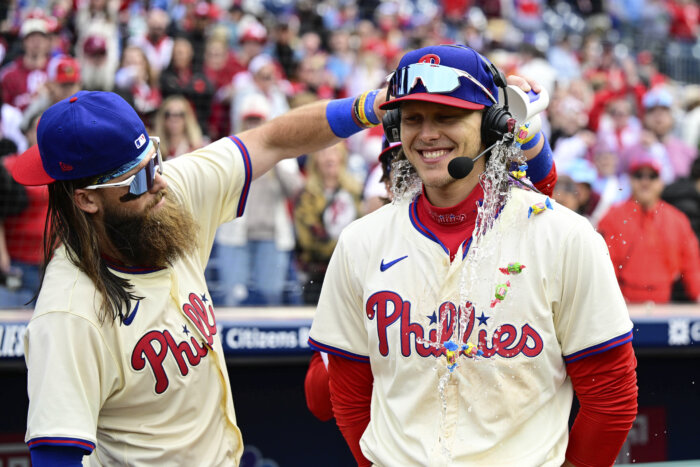Fifty years ago in the sunny town of Los Angeles, there was a lot of change and reform happening. The Sisters of the Immaculate Heart quite literally turned society on its head and took matters into their own hands when it came to their calling in the 1960s standing up to the patriarchy of the Catholic Church. Through their actions and their perseverance, the group began fighting for equality, their livelihoods, and their own freedom against an all-powerful Cardinal who sought to keep them in their place. Their actions not only began to ignite change, but it also inspired many minds and students so many years ago, and that hasn’t changed—even in the year 2021.
In the 1990s, film producer Shawnee Isaac Smith began talking to the Sisters and acquired about 50 different interviews all surrounding their time in those pivotal moments in history. When director Pedro Kos came on board years later, many of the Sisters had passed but watching the archival footage and past interviews sparked his own imagination and gave him the idea to embark on his own sets of interviews. The result of those efforts is now the documentary film ‘Rebel Hearts,’ which takes those first-hand interviews, animation and more to tell the story of how a group of women worked so hard for change in so many areas of life, even when it was tough to do. The outcome allowed them to live in the moment and decide what was best for our world and its people today.
And that’s also the most compelling part of the story as a whole… just how relevant it all still is. Director Pedro Kos sat down to discuss the historical and current significance of ‘Rebel Hearts.’
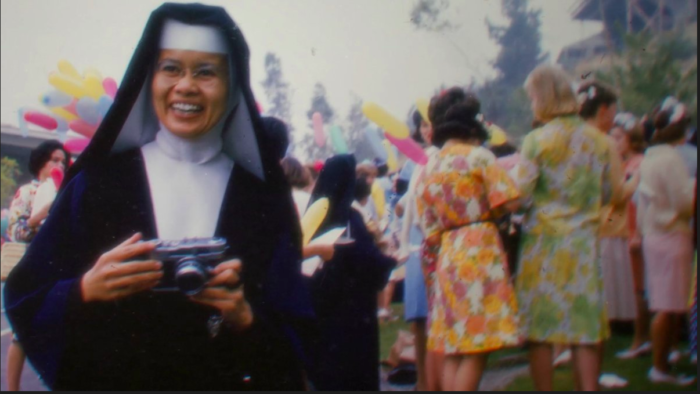
Why did you want this story to be told through a film?
The story of the making of the film is quite actually an epic story. I started in 2015 when our writer/producer Shawnee Isaac Smith and Producer Kira Carstensen came to me with this treasure trove of incredible interviews with these extraordinary women. Shawnee had been documented the Immaculate Heart and former Sisters since the late 90s actually. It was at a time when most of them were alive and well and she was able to get first-hand accounts. When Kira approached me, Kira thought this was something I might respond too—I grew up Catholic, I’m from Brazil and despite being a gay man, I’m also a spiritual person and I have a great admiration for Sisters.
When I heard this story I was just blown away about how a group of extraordinary well-educated women were able to stand up to a very powerful structure and a hierarchy, and also begin to reimagine what faith looks like in the present. They were so about being in the world and in the moment to be the best teachers they could be, empowering their students to be the best leaders. So, their imaginations very much inspired my imagination and I thought it was just a timely story, rethinking these structures that govern our lives and questioning them. They brought in the great minds of the times to teach these students to be great leaders and critical thinkers. I thought wow, this is a great story about now, [and] to grapple with the current moment of reexamining and re-evaluating these structures that govern our lives and how they can be more inclusive and just…This is what the [Sisters of] the Immaculate Heart were all about 50 years ago.
What were some of the interviews that stood out to you?
It was a wealth of riches. Unfortunately, so many great interviews were not able to make it into the film, but I would say there were so many that sparked my imagination. Some of the stand-outs are definitely in the film. For example, Anita Caspary who was the Mother General—her strength and her calm [were] very inspiring. We got to the point where members of the post-production team would have [their favorites] for interviews. We took on the roles of them and aspired to be them. But, Anita, with her strength and her fire and passion and activism, she was really out there in the forefront in a lot of social movements.
Also Helen Kelley who was president of the college, I call her the Thomas Jefferson of the group because she was an extraordinary thinker and a great writer. We also have some wonderful interviews I did, for example with Patrice Underwood who marched in Selma. [She] became a friend and inspiration to all of us. She sadly passed away last November, and we were all so heartbroken because she was just the embodiment of love and inclusion and hopefulness. You see her out there marching at the human trafficking march at the end of the film and because of Covid they couldn’t leave their retirement community building, but I know that when the Black Lives Matter was happening in the last year, she was dying to join the marches. But she was there in spirit and she was one who was always fighting for justice. Those are our favorites and standouts, but literally, you could spend a week watching all of these interviews. It was life-changing and definitely transformative.
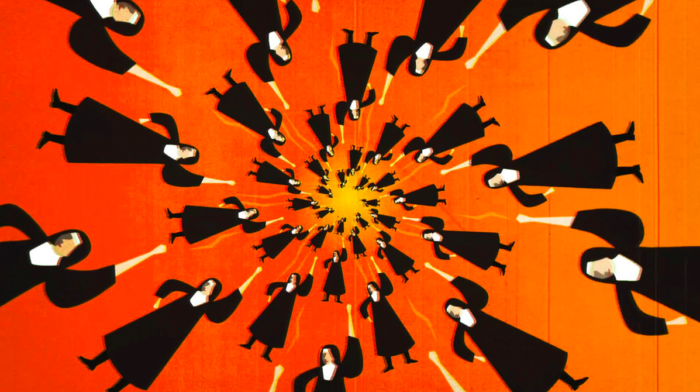
What does the animation bring to the story?
It was interesting. We amassed a lot of archival material, both from the Immaculate Heart and from other sources and other filmmakers that were filming at that time like Baylis Glascock and Thomas Conrad. The college was this cultural hub in Los Angeles of that time, and many filmmakers and artists were coming and filming there. But there also parts of the story that are also integral to how they got to the place they got. We had a saying in the edit room: What would [Sister] Corita [Kent] do? How would Corita tell this? That was sort of a code for us to think outside the box and think of different ways.
Our producer, Judy Korin, had worked with this wonderful Icelandic animator based in Montreal, Una Lorenzen and I was playing with the idea of having [animation] a little more artisanal and grounded in the film. Judy said, take a look at Una’s work and immediately it was that lightbulb—yes, that. I showed Una some of Corita’s work, and from that, she really responded to it strongly and fell in love like all of us immediately. She really ran with this idea to emulate the layers and textures and bring them into the animation. Every animation has newspapers or documents that speak to that moment in the film.
Why does this story still resonate so strongly today?
For us, it was always a story about now. Last year we really got chills as the Black Lives Matter movement and social justice movements were happening. We saw the signs from the protests they were holding in the 60s to the signs we are seeing today— they are almost identical, and they are calling for the exact same thing. They are calling for justice and inclusion. It’s so haunting.
What Patrice Underwood says when she went to Selma, that lightbulb moment she had there: She says as she’s waking down the street and talking about oppression in a full habit [she’s] being called a whore and pushed and mistreated and then she has that realization. This is what people have to go through day after day in their daily lives.
We have that same moment, in a way, as a society. That’s what the Black Lives Matter movement really was about. Unfortunately, there are a whole group of people being completely mistreated and live in a very unjust world and it was that awakening we had that we need to do something about this, just like 50 years ago. That really inspires that look inward to reform and how to change their structure and how they live their lives in order to create a better and just world.
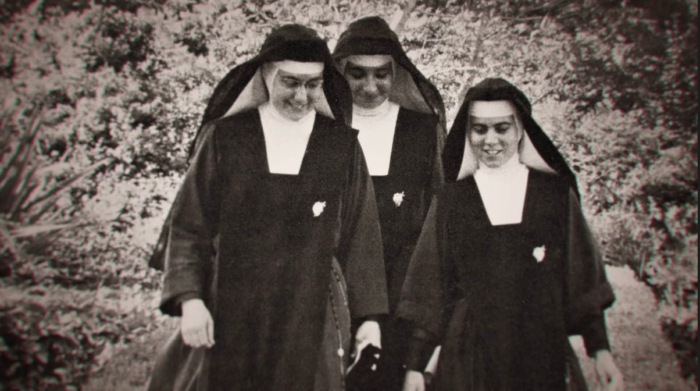
‘Rebel Hearts’ will open in select theaters June 25 and will release on discovery+ on June 27.



